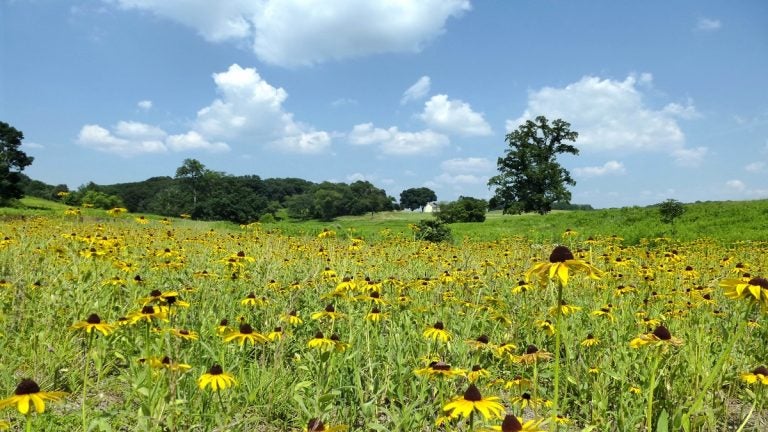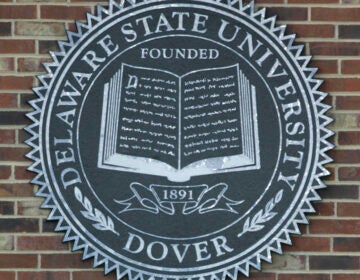Longwood Gardens doubles size of Meadow Garden

(Courtesy of Longwood Gardens)
Visitors to Longwood Gardens will experience more of its natural beauty when the newly-expanded Meadow Garden opens to the public on Friday.
Construction on the new Meadow Garden began last summer when the Route 52 relocation project enabled Longwood to more than double the size of its existing meadow from 40 to 86 acres, offering visitors the opportunity to explore the areas beyond the manicured gardens.
“We own about 1,100 acres, but only 350 are open to our guests,” said Sharon Love, director of horticulture at Longwood. “Part of the thing that inspired us is that it’s really gorgeous natural land and very different from the European gardens that inspired Mr. du Pont. But natural lands also inspired him and that’s why he originally bought the property.”
The Meadow Garden applies the principles of horticulture and ecological design to produce a living landscape that not only celebrates the beauty and variety of native plants, but utilizes the interconnectedness of flora and fauna to create a sustainable landscape.
In addition to the hundreds of plants already thriving in the meadow, more than 100 species have been added to create sweeps of color and texture and to attract and support wildlife in every season.
“We’ve gone in and taken inspiration from those natural patterns, but accentuated them by adding plug plantings so that visitors are going to get a more highlighted or intense experience than they would get from a natural meadow anywhere else in the Brandywine Valley,” said Jonathan Alderson of Jonathan Alderson Landscape Architects in Wayne, Pa.
The firm, which specializes in the use of native plantings and materials, designed the Meadow Garden.
The meadow’s biodiversity minimizes environmentally-destructive impacts and relies on the various ecosystems completing and complementing each other. Longwood’s horticulture and ecological experts will ensure that the natural systems are maintained by enhancing native plantings, controlling invasive species and supporting air, water and soil quality.
“The more diverse it is, the more resilient it is,” said Tom Brightman, Longwood’s land steward specialist.
Longwood hopes that the additional acreage will increase the potential for attracting species like the Eastern Meadowlark, which require a sizable meadow habitat to complete their life cycles and migratory purposes, Brightman said.
An educational resource
The Meadow Garden will serve as an educational resource as well. More than three miles of walking and hiking trails guide guests through the various habitats. Four bridges span the terrain, putting visitors in touch with the elements of the natural world that surrounds them: sky, soil, water, flora and fauna.
“It’s not somewhere where you’re going to be restricted,” Alderson said. “And that’s something that we’d like people to take away, that contrast between these open spaces and the more formal gardens on the property.”
There are also four pavilions in the Meadow Garden. Each pavilion has its own theme, imparting the message of the conservation activities and the wildlife it sustains. Hawk Point sits at one of the highest elevations in the garden, providing the perfect vantage point for watching and identifying birds that reside in the Meadow Garden.
The Pollination Overlook explores the important role of pollinators, which includes bumblebees, butterflies and hummingbirds, and highlights the plants that attract each pollinator. The Hourglass Lake Pavilion tells the story of the nearby wetlands and how this habitat is the foundation for a food chain that includes insects, amphibians, fish, small mammals and numerous birds. The Forest Edge Pavilion creates a narrative of the surrounding woodlands and the plants and wildlife that call this area home.
In addition, the historic Webb Farmhouse, which has stood on the property since the early 1700s, has been selectively restored and will serve as an interpretive gallery. Inside, guests can explore two galleries: one displaying photography and art work depicting the Meadow Garden throughout the changing seasons; the other telling the story of the people who have inhabited and influenced the land since the Lenni Lenape.
WHYY is your source for fact-based, in-depth journalism and information. As a nonprofit organization, we rely on financial support from readers like you. Please give today.




